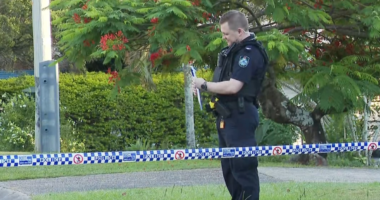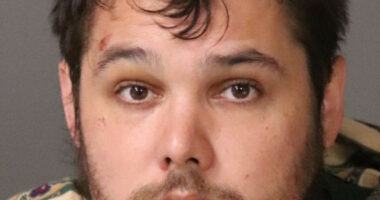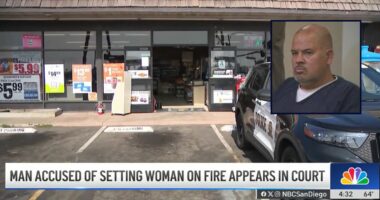Share this @internewscast.com

Former Alaska Governor Sarah Palin (R) arrives at a federal court in Manhattan to resume a case against the New York Times. (Photo by Spencer Platt/Getty Images)
Former Alaska Gov. Sarah Palin (R) told a jury on Thursday that she and her family were subjected to death threats after being falsely linked to a mass shooting in 2011.
When the New York Times revived the old controversy in 2017, Palin testified she thought: “Oh, no! Not again.”
Jared Lee Loughner’s mass shooting that killed six people—including a 9-year-old girl and a federal judge—and injured 13 people, including Rep. Gabrielle Giffords (D-Ariz.). Palin faced a firestorm of criticism at the time because her political action committee had put out a map with crosshairs over Giffords’ district and those of 19 other Democrats.
Though no link was ever established between the mentally ill Loughner’s massacre and the map, an editorial by the New York Daily News declared more than a decade ago that “blood is on Sarah Palin’s hands.” Palin never sued over that editorial, but she told a jury that being blamed for that mass shooting had an immediate blowback.
“The death threats really ramped up—disturbing death threats against my children,” Palin said, referring to the immediate aftermath of the 2011 Loughner shootings. “There seemed to be a campaign out there from my daughter, Piper.”
One of Loughner’s victims was 9-year-old Christina-Taylor Green, and Palin said that many hoped her daughter would suffer the same fate.
Some six years after that difficult period, Palin said, she was “mortified” to learn that the Times printed the same link in the editorial titled “America’s Lethal Politics.”
As an attorney for the Times noted during opening statements, the editorial had been sparked by the 2017 congressional baseball shooting, who shot Rep. Steve Scalise (R-La.). Shooter James Hodgkinson’s politics, a supporter of Sen. Bernie Sanders (I-Vt.) who loathed then-President Donald Trump (R), spurred the Times editorial board to denounce the consequences of harsh political rhetoric.
Palin noted that she defended her democratic socialist foil.
“I did not want to see more untruths printed,” the ex-VP candidate said, adding that Sanders should not have been blamed in a “knee-jerk reaction” by those trying to “score political points” and “capitalize” on violence.
The Times editorial ran for roughly 12 hours before the paper ran a lengthy correction stating that there was no link between the map and the 2011 shooting. The correction did not mention Palin’s name, pursuant to a policy meant to avoid compounding the error by repeating it, but the revised editorial continued to mention the controversy about the map.
“Before the shooting, Sarah Palin’s political action committee circulated a map that showed the targeted electoral districts of Ms. Giffords and 19 other Democrats under stylized cross hairs,” it read. “But in that case no connection to the shooting was ever established.”
Palin said that wasn’t much better.
“Nothing changed,” she said. “They doubled down.”
In explaining her decision to sue the Times for defamation, Palin described herself as a “David,” representing “the people,” facing off against the Gray Lady’s “Goliath.” She said that she asked herself “what were the stones that David could use” in that effort.
“I was up in Wasilla, Alaska, up against [those who] buy ink by the barrel, and here I was with my No. 2 pencil,” Palin declared.
Palin appeared to describe little tangible impact from the 2017 editorial, other than lost sleep. The testimony about death threats involved a time frame predating its publication.
On cross-examination, the Times‘s attorney David Axelrod asked her a series of questions demonstrating that the ex-Wasilla mayor, Alaska governor and vice presidential candidate to John McCain (R) was no stranger to the political arena.
The paper’s questions also showed that Palin’s ability to earn income continued long after the Times editorial, including a paid appearance on “The Masked Singer.”
Palin jokingly objected when Axelrod asked him that question, though she acknowledged she accepted a paycheck for it.
The Times has argued that Palin was used to criticism, continued to have a career after their editorial, and wasn’t damaged by it.
This is a developing story.
Have a tip we should know? [email protected]
Source: This post first appeared on













